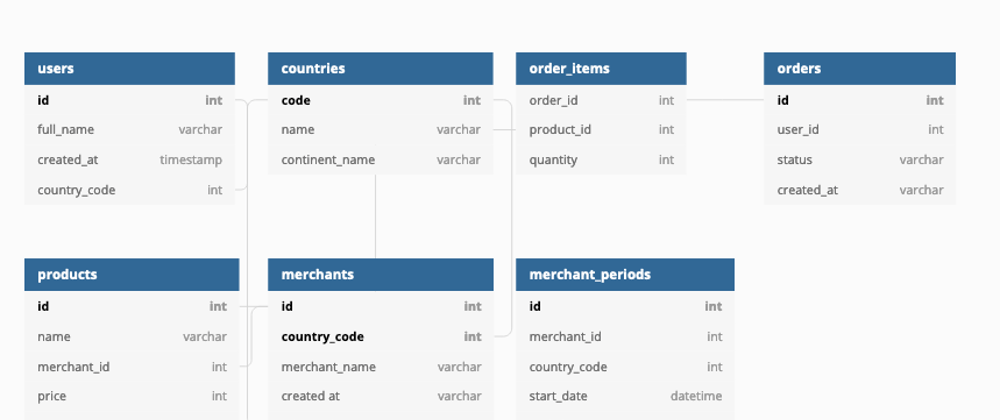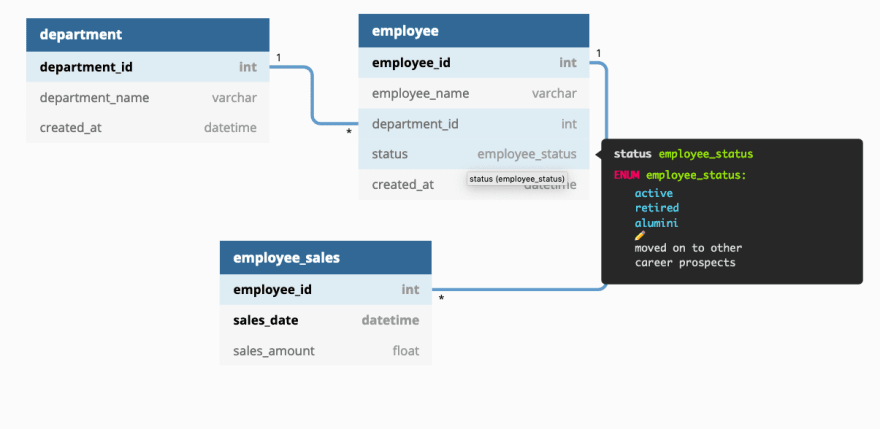Recently, I was looking for tools to quickly come up with an ERD (Entity-Relationship Diagram) for one of the client engagements. I wanted it to be something simple but aesthetically pleasing as it was an early stage of the project. I came across an online tool called dbdiagram.io. This tool helped in coming up with a nice pictorial representation of the data model relatively quickly.
Features supported by the tool:
- Primary key representation
- Foreign key representation along with one-to-one, one-to-many, many-to-one relationships
- Support for representing fixed number of values a column can hold through Enum tables
- Support for default values and unique column representation.
- Ability to export created data models into PNG or PDF formats. Also, one can export SQL of the data model for PostgreSQL, SQL Server, and MySQL (account sign-up required to utilize these features)
- Ability to import SQL to generate data model
How does it work?
- Visit dbdiagram.io and come up with a desired data model structure like below. This tool generates data model as soon the entered structure is valid.
// Creating tables
Table department as d {
department_id int [pk, increment] // auto-increment
department_name varchar [not null, unique]
created_at datetime [default: `now()`]
}
// Enum for 'employee' table below
Enum employee_status {
active
retired
alumini [note: 'moved on to other career prospects'] // add column note
}
Table employee as e {
employee_id int [pk, increment] // auto-increment
employee_name varchar
department_id int [ref: > d.department_id]
status employee_status
created_at datetime [default: `now()`]
}
Table employee_sales as es {
employee_id int [ref: > e.employee_id]
sales_date datetime
sales_amount float
Indexes {
(employee_id, sales_date) [pk]
}
}








Top comments (0)